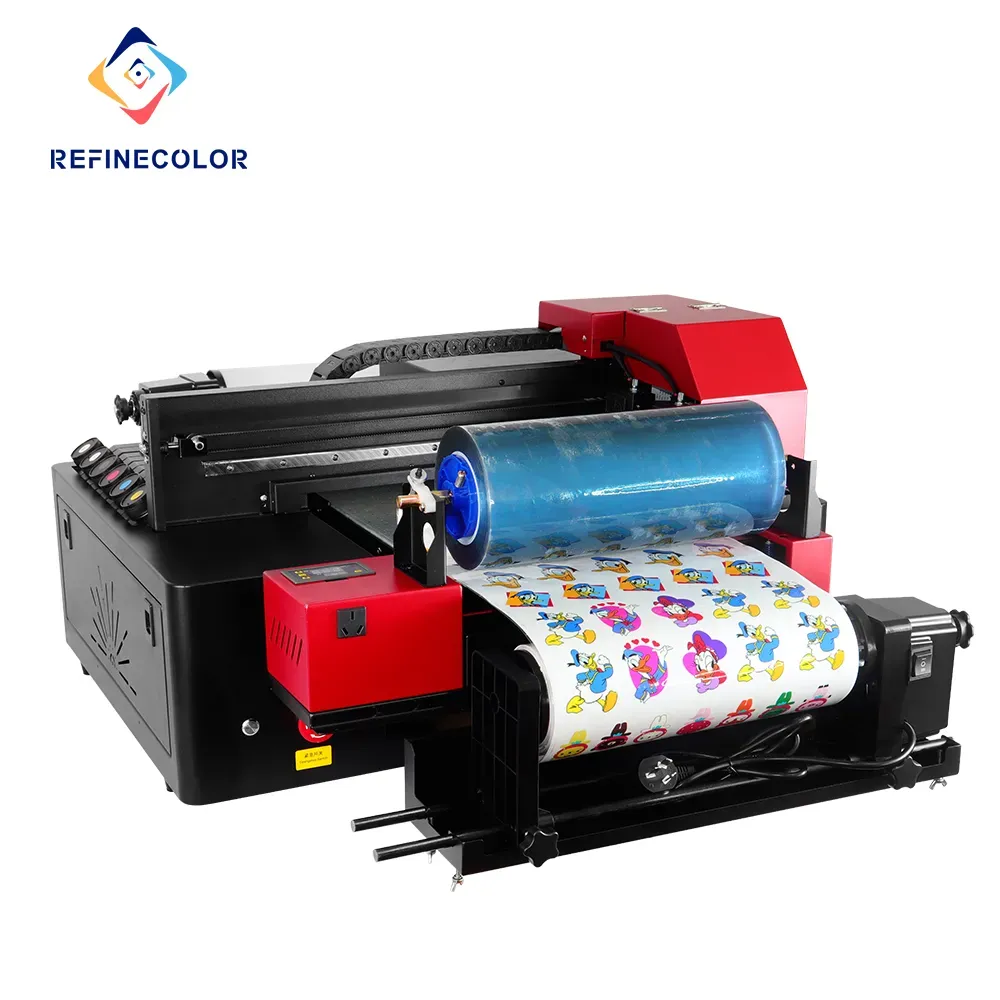UV DTF, or Ultraviolet Direct-to-Film printing, is revolutionizing the design landscape with its rapid and high-quality output. In an industry where precision and speed hold paramount importance, the impact of UV DTF printing is profound, enabling designers to push creative boundaries like never before. This cutting-edge technology not only streamlines design workflows but also boasts numerous DTF technology benefits, such as the ability to print on a variety of materials with vibrant results. As the advantages of UV printing unfold, designers are positioned to enhance their projects while meeting the relentless demands of today’s market. This article delves into how UV DTF transforms design processes, emphasizing its significance and potential future developments in the industry.
Known as Ultraviolet Direct-to-Film printing, UV DTF is a transformative technique that is reshaping the way designers operate within their creative realms. This advanced printing method combines UV light with direct film technology, offering designers a faster, more efficient way to produce high-quality prints. The versatility of this approach not only expands the range of materials available for printing but also opens up new avenues for innovative design workflows. By harnessing the capabilities of this technology, creatives can achieve striking visuals while benefiting from the immediate curing advantages associated with UV printing. Throughout this article, we will explore the dynamic shift that DTF technology brings to the design industry, highlighting its advantages and exploring how it meets contemporary challenges.
Introduction to UV DTF Printing Technology
UV DTF printing technology represents a revolutionary approach in the landscape of design and print production. With its ability to print directly onto a film that is then transferred to an array of substrates, ranging from textiles to metals, UV DTF offers unparalleled flexibility for designers. This process utilizes ultraviolet light to cure the ink rapidly, significantly streamlining the workflow and allowing for quick adaptation to changing project demands.
As the design industry evolves, incorporating advanced printing techniques such as UV DTF becomes essential. This method not only enhances operational efficiency but also ensures high fidelity in the printing results. The immediate curing process, which eliminates traditional drying times, is a game-changer, enabling designers to bring their creative visions to life quicker than ever before.
Frequently Asked Questions
What is UV DTF printing and how does it work?
UV DTF printing, or Ultraviolet Direct-to-Film printing, is a modern technique that uses UV light to instantly cure ink on a special film, which can then be transferred onto a variety of surfaces like textiles, plastics, and metals. This process eliminates drying times, resulting in rapid production and high-quality output.
What are the key benefits of UV DTF technology for designers?
UV DTF technology offers several advantages for designers, including versatility to print on diverse materials, superior quality with vibrant colors and sharp details, and enhanced time efficiency due to reduced drying times, allowing quicker project turnaround.
How does UV DTF printing improve design workflows?
UV DTF printing significantly improves design workflows by facilitating rapid prototyping, enabling designers to produce samples faster and iterate designs effectively. Additionally, it allows for greater personalization opportunities, meeting the increasing demand for custom products.
What challenges might designers face when adopting UV DTF printing?
While UV DTF printing provides numerous benefits, designers may encounter challenges such as the high initial investment costs for equipment and the need to acquire new skills to operate UV DTF technology effectively.
What makes UV printing advantages stand out in the market?
The advantages of UV printing, particularly UV DTF, include quicker curing times, a broader range of printable materials, and high-resolution outputs, which help designers keep pace with the fast-evolving market demands while maintaining exceptional quality.
How is UV DTF technology shaping the future of design and printing?
The future of design and printing is being reshaped by UV DTF technology as it becomes more accessible and cost-effective. With its capacity to satisfy the growing demand for unique and personalized products, UV DTF is poised to redefine industry standards and enhance creativity among designers.
| Key Aspect | Description |
|---|---|
| Introduction | Discussion on the impact of UV DTF on designers. |
| Understanding UV DTF Printing | Cures ink directly onto film, reducing production times. |
| Benefits of UV DTF | Versatility, superior quality, and enhanced time efficiency. |
| Transforming Workflows | Rapid prototyping and personalization opportunities. |
| Challenges | Initial investment costs and the need for new skill sets. |
| Future Developments | Growth in market demand and innovations. |
Summary
UV DTF printing is revolutionizing the design industry by offering a remarkable blend of speed, quality, and versatility. As this innovative technology continues to evolve, designers are increasingly integrating UV DTF into their workflows, allowing them to produce stunning designs on a wide range of materials with rapid turnaround times. However, the transition to UV DTF does come with challenges, such as high initial investment costs and the need for updated skill sets among designers. Despite these hurdles, the potential for increased creativity and responsiveness in design processes makes UV DTF an essential focus for modern designers. As we look to the future, the anticipated growth in UV DTF technology indicates a significant shift towards more personalized and unique products in the marketplace.




